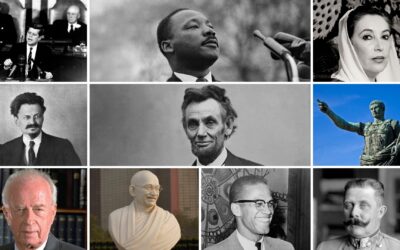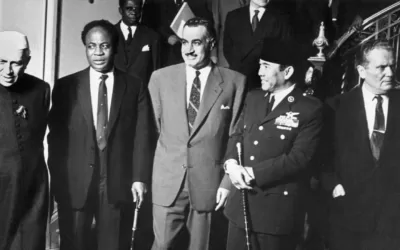In the annals of human history, no invention has been as potent and terrifying as the atomic bomb. The incredible destructive power that rests in nuclear weapons has held the world hostage since the end of World War II. It’s a power that has, arguably, kept the peace through mutually assured destruction. However, it has also instilled a lingering fear, a Sword of Damocles, hanging precariously over the world’s collective conscience. As a species, we stand on the precipice of self-destruction, with the power to annihilate life as we know it within the span of a few hours.
That very power has spurred the nations of the world to seek alternatives, to disarm and to pull back from the brink. The journey toward global nuclear disarmament is an arduous trek, one fraught with many challenges, setbacks, and yes, even victories. It’s a road paved with good intentions, sometimes marred by political maneuvering and mistrust. But it’s a road we must all traverse, together, for the promise of a safer world.
In the twilight of World War II, humanity entered the nuclear age. The atomic bombings of Hiroshima and Nagasaki ushered in a new era, one where humankind had the power to unleash devastation on an unimaginable scale. The sobering reality of this power quickly became apparent. For the scientists, led by the likes of Oppenheimer and Fermi, who were instrumental in harnessing this power, it was a reality that weighed heavily upon their shoulders.
The specter of a nuclear arms race between nations loomed large. The United States and the Soviet Union, locked in an ideological battle during the Cold War, embarked on a perilous journey of nuclear armament, each building up a stockpile of nuclear weapons that could destroy the world many times over.
But with the Cuban Missile Crisis in 1962, the world stood on the brink of nuclear war. It was a wakeup call, a stark reminder of the potential cataclysmic outcome of this arms race. It spurred the world into action. In 1963, the Partial Test Ban Treaty was signed, prohibiting all test detonations of nuclear weapons except for those conducted underground. It was the first step towards controlling the nuclear arms race.
The journey towards nuclear disarmament, however, is a long one. In 1968, the Treaty on the Non-Proliferation of Nuclear Weapons (NPT) was signed, with 190 countries currently being parties to it. The NPT is built on three pillars: non-proliferation, disarmament, and the right to peacefully use nuclear technology. It recognizes five countries—United States, Russia, the United Kingdom, France, and China—as nuclear-weapon states, and strives to prevent the spread of nuclear weapons and weapons technology.
But the road to disarmament is fraught with many challenges. Trust, or the lack thereof, between countries has often been a major hurdle. Countries that possess nuclear weapons are often unwilling to give them up unless they can be assured that others will do the same.
The technological aspect of nuclear disarmament is another challenge. Verifying that a country has completely dismantled its nuclear arsenal is a complex task. It requires the development of sophisticated detection technologies, the creation of robust inspection protocols, and the willingness of countries to subject themselves to such scrutiny.
Then there’s the political will or, in many cases, the lack of it. Nuclear weapons are seen by some countries as a necessary deterrent, a means of ensuring their security in an unpredictable world. Convincing these nations to give up their nuclear weapons is a tall order.
Yet, despite these challenges, progress has been made. Several bilateral and multilateral treaties have been signed over the decades, each aimed at limiting the spread and use of nuclear weapons. These include the Strategic Arms Reduction Treaty (START), the Comprehensive Nuclear-Test-Ban Treaty (CTBT), and the Treaty on the Prohibition of Nuclear Weapons (TPNW).
But perhaps the most significant progress has been made in the realm of public awareness and engagement. Across the globe, citizens are becoming more aware of the dangers of nuclear weapons and the importance of disarmament. This growing consciousness has spurred movements and organizations dedicated to nuclear disarmament, lending a powerful voice to the cause.
In the end, the road to nuclear disarmament is a journey we all must undertake, for the alternative is too grim to contemplate. It’s a journey that requires us to build trust, to create robust verification mechanisms, to muster the political will, and to engage the global citizenry. It’s a journey that is certainly challenging, but one that promises a safer world for all. The journey towards nuclear disarmament, therefore, is not just about removing weapons—it’s about forging a future built on cooperation, trust, and the promise of lasting peace.
Keywords:
- Nuclear disarmament: The process of reducing or eliminating nuclear weapons.
- Mutually assured destruction: A military strategy where full-scale use of nuclear weapons by two opposing sides would cause the complete annihilation of both the attacker and the defender.
- Arms race: A competition between two or more countries for military supremacy, each striving to outdo the others in the quantity and quality of its armed forces.
- Cuban Missile Crisis: A 13-day political and military standoff in October 1962 between the United States and the Soviet Union over the installation of nuclear-armed Soviet missiles in Cuba.
- Partial Test Ban Treaty: A treaty prohibiting all test detonations of nuclear weapons except for those conducted underground.
- Treaty on the Non-Proliferation of Nuclear Weapons (NPT): An international treaty with the objective to prevent the spread of nuclear weapons and weapons technology, promote cooperation in the peaceful uses of nuclear energy, and further the goal of achieving nuclear disarmament.
- Verification mechanisms: The systems or procedures used to confirm that nations are adhering to the terms of treaties, particularly disarmament treaties.
- Strategic Arms Reduction Treaty (START): A bilateral treaty between the United States and the Soviet Union (later Russia) on the reduction and limitation of strategic offensive arms.
- Comprehensive Nuclear-Test-Ban Treaty (CTBT): A multilateral treaty that bans all nuclear explosions, for both civilian and military purposes, in all environments.
- Treaty on the Prohibition of Nuclear Weapons (TPNW): An international agreement that comprehensively prohibits nuclear weapons.
Key Takeaways:
- The journey toward global nuclear disarmament is long and filled with many challenges, including trust issues between countries, technological hurdles, and a lack of political will.
- Despite these challenges, significant strides have been made in the right direction, including the signing of several crucial disarmament treaties and an increase in public awareness and engagement.
- The road to nuclear disarmament requires international cooperation, robust verification mechanisms, political will, and active citizen participation.
- Nuclear disarmament is not just about the elimination of nuclear weapons but about building a safer, more cooperative, and peaceful world.
The Nuclear Age Articles
Unraveling The Atomic Age: The Life and Legacy of J. Robert Oppenheimer
Unveiling the Atom: The Manhattan Project’s Deep Impact on World History
Albert Einstein: The Maverick Mind that Revolutionized Physics
Leo Szilard: The Atomic Pioneer’s Crusade for Peace
The Ethical Odyssey: Exploring Morality in the Course of Scientific Discovery
Los Alamos National Laboratory: Navigating the Past, Present, and Future of Scientific Innovation
The Cold War: Superpowers in the Ballet of Weaponry
Nuclear Proliferation: The Ever-Present Global Challenge
Interplay of Science and Politics: The Unsung Dance of Progress
Enrico Fermi: Mastermind Behind the Nuclear Age
From Atomic To Thermonuclear: A Detailed Examination of Nuclear Weapon Evolution
The Unforgotten Echoes: Hiroshima and Nagasaki’s Tale of Nuclear Devastation and Human Resilience
Living Under the Mushroom Cloud: The Psychological Impact of the Nuclear Age
Nuclear Fallout: Unmasking the Invisible Threat to Health and Environment
The Power and Peril of Nuclear Energy: A Balanced Perspective
Radiation Sickness: Unveiling the Hidden Costs of the Nuclear Age
From Darkness to Light: Lessons from Chernobyl and Fukushima
Deciphering the Nuclear Waste Conundrum: The Path Towards Sustainable Solutions
Guarding the World from Nuclear Threats: International Laws for Nuclear Disarmament
Journey to Peace: Unraveling the Path to Global Nuclear Disarmament
Culture Echoes of the Atomic Age: Artistic Narratives in the Nuclear Era












0 Comments